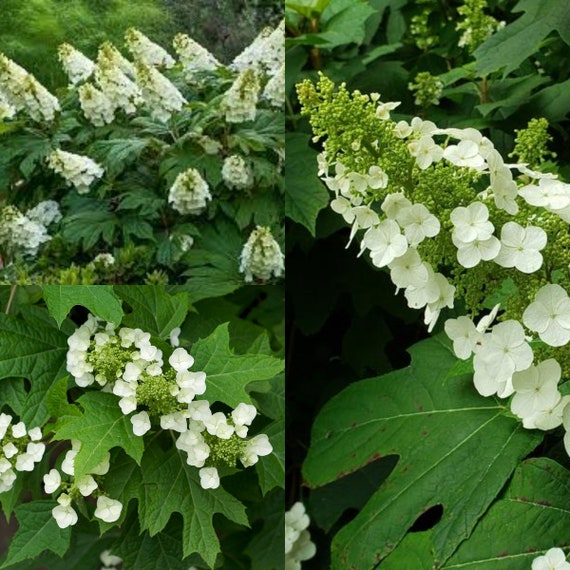Grow Your Own Hydrangeas From Seed
Grow Your Own Hydrangeas From Seed
Hydrangeas are beautiful flowering shrubs that can add a touch of elegance to any garden. They come in a variety of colors, including blue, pink, purple, and white. And they're relatively easy to grow, even from seed.
If you're interested in growing your own hydrangeas from seed, here's a step-by-step guide:
- Collect the seeds. You can collect hydrangea seeds from the spent flowers of your own plants. Or, you can purchase seeds online.
- Stratify the seeds. Hydrangea seeds need a period of cold stratification in order to germinate. To stratify the seeds, place them in a plastic bag with some damp peat moss or vermiculite. Put the bag in the refrigerator for 6-8 weeks.
- Plant the seeds. Once the seeds have been stratified, you can plant them in a seed tray or pot filled with a well-draining potting mix. Sow the seeds on the surface of the soil and do not cover them.
- Water the seeds and keep them moist. The seeds will need to be kept moist in order to germinate. Water the seeds regularly, but be careful not to overwater them.
- Germination. Hydrangea seeds typically germinate in 2-4 weeks. Once the seedlings have emerged, you can thin them so that there is one plant per pot.
- Care for the seedlings. The seedlings will need to be cared for just like any other young plant. Keep them in a sunny location and water them regularly.
- Transplant the seedlings. Once the seedlings have grown several sets of leaves, you can transplant them to their permanent location in the garden.
With a little patience and care, you can easily grow your own hydrangeas from seed. And once they're mature, you'll enjoy their beautiful blooms for many years to come.
Here are some additional tips for growing hydrangeas from seed:
- Use a well-draining potting mix. Hydrangeas do not like to sit in wet soil.
- Keep the seedlings in a bright, sunny location. However, avoid direct sunlight, as this can scorch the leaves.
- Fertilize the seedlings every few weeks with a balanced fertilizer.
- Water the seedlings regularly, but be careful not to overwater them.
- Be patient! It can take several years for hydrangeas to reach full bloom.
With a little care and patience, you'll be enjoying beautiful hydrangea blooms in no time!
Hydrangeas are beautiful flowers that come in a variety of colors, making them a popular choice for gardens and home decor. If you're thinking about growing hydrangeas from seed, is a great resource for information and products.
offers a wide selection of hydrangea seeds, including both classic varieties and more unusual ones. They also have a helpful blog with articles on topics such as how to germinate hydrangea seeds, how to care for hydrangea plants, and how to choose the right hydrangea for your climate.
In addition to seeds, also sells a variety of other hydrangea products, such as plants, fertilizer, and pots. They also offer a helpful customer service team that can answer any questions you have about hydrangeas.
If you're looking for a reliable source for hydrangea seeds and products, is a great option. Visit their website today to learn more!
FAQ of hydrangea seeds online
Q: When is the best time to start hydrangea seeds indoors?
A: The best time to start hydrangea seeds indoors is 6-8 weeks before the last frost date in your area. This will give the seedlings enough time to grow before being transplanted outdoors.
Q: What type of soil do hydrangea seeds need?
A: Hydrangea seeds need a well-drained, loamy soil that is slightly acidic. You can improve the drainage of your soil by adding compost or peat moss.
Q: How much sunlight do hydrangea seeds need?
A: Hydrangea seeds need bright, indirect sunlight. Too much direct sunlight can scorch the seedlings.
Q: How often should I water hydrangea seeds?
A: Keep the soil moist, but not soggy. Overwatering can cause the seedlings to rot.
Q: Do hydrangea seeds need to be stratified?
A: Not all hydrangea seeds need to be stratified. Some varieties, such as oak-leaved hydrangea, can be planted directly in the soil. However, most hydrangea seeds do need to be stratified in order to germinate. Stratification is a process of cold-treating seeds to mimic the winter conditions they would experience in nature.
Image of hydrangea seeds online
5 different images of "hydrangea seeds online" from Pinterest.com:
This type of hydrangea is known for its large, colorful blooms. The seeds are small and black, and they can be planted in the fall or spring.
This type of hydrangea is known for its conical blooms. The seeds are larger than hydrangea macrophylla seeds, and they are also black. They can be planted in the fall or spring.
This type of hydrangea is known for its small, white blooms. The seeds are also small and white, and they can be planted in the fall or spring.
This type of hydrangea is known for its oak-shaped leaves and its blue or pink blooms. The seeds are small and black, and they can be planted in the fall or spring.
This type of hydrangea seed mix includes a variety of different hydrangea species, such as hydrangea macrophylla, hydrangea paniculata, hydrangea arborescens, and hydrangea quercifolia. The seeds are small and black, and they can be planted in the fall or spring.



Post a Comment for "Grow Your Own Hydrangeas From Seed"